Updated June 6, 2023
Yukata vs. Kimono vs. Hakama: Your Guide to Traditional Japanese Clothing
Anyone who knows a thing or two about Japan knows that the country historically has had a distinct, colorful sense of fashion.
However, while most people will instantly recognize Japanese clothing by the beautiful floral patterns and the flowy silk fabrics that became a staple of the country’s traditional clothing style, chances are, they won’t be able to tell a kimono apart in a lineup of traditional Japanese clothes even if their lives depended on it.
Instantly identifiable, kimonos are perhaps one of the most globally known traditional clothing from Japanese culture, but there’s more to Japan’s traditional clothes than meets the eye.
In addition to the kimono, there’s the yukata, the hakama, and the jinbei, but there are also plenty of other styles and accessories that are used for specific occasions or situations that you may not know about.
This is why, in this post, I’ll dive into traditional Japanese clothing and describe what a yukata, kimono, and hakama are. I’ll also tell you about some other Japanese attire and when you should wear it.
Let’s first start with a brief introduction to the traditional Japanese clothing style, wafuku.
Meet Traditional Japanese Fashion: Wafuku
The term wafuku is a general term that’s used to refer to all traditional Japanese clothing. The two kanji symbols for the word are 和服, and they literally translate to “Japanese (和)” and “clothing (服).”
So, if the term directly means “Japanese clothing,” how did the term come to be used by Japanese people themselves? Here’s a brief history lesson you might enjoy.
Wafuku: Brief History of Traditional Clothing in Japan
Even though it refers to traditional Japanese clothing in a general sense, wafuku wasn’t always a term that was used to describe a style as a whole. In fact, kimono was the general term used for the traditional clothing style.
The origins of the word date back to the Meiji period, which is a significant time in history for Japanese society. Essentially, the Meiji period is the historical period that came after the Meiji Restoration, which signifies the end of the reign of the military government and the return of imperial authority in Japan.
During this period, inspired by the technological advancements and the financial welfare of Western societies at the time, the reign of Emperor Meiji brought about a series of significant cultural, political, and social changes in Japan.
Essentially, during this period, the society of Japan started its Westernization. As the political and financial structures went under a significant change, so did the culture.
With this Westernization movement, the people of Japan were also introduced to Western clothing. Western fashion was significantly different from what the Japanese primarily wore at the time, so they called it yofuku, which meant “Western clothing.”
So, as a result, traditional Japanese clothing, which was described as kimono up until then, became to be referred to as wafuku, or Japanese clothing.
Since then, wafuku has been an all-encompassing term for all traditional Japanese clothing and accessories and describes the traditional Japanese fashion style best known for long, flowy kimonos and yukatas.
The Art of the Kimono: Japan’s Traditional Dresses
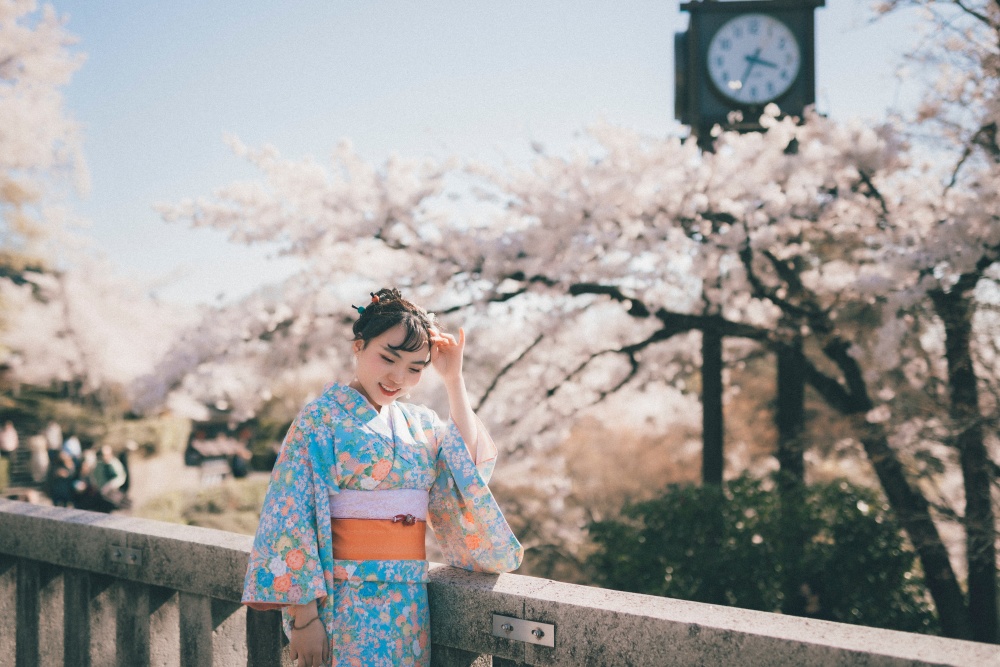
A big part of wafuku, the kimono is perhaps the most well-known piece of clothing that’s directly identified with Japanese culture.
The word itself literally translates to “something that is worn,” and this is because it used to refer to all Japanese clothing until the Meiji period, as I explained.
Even though, nowadays, you can find kimonos made from all types of materials, including polyester, traditionally, kimonos were made from handmade fabrics like silk, linen, and hemp.
Kimonos are known to boast colorful, eye-catching designs and rich patterns and can feature embroidery and natural fabric dye to achieve these. However, this style is actually more accurate for kimonos made for women.
Kimonos that are worn by men usually feature more muted colors and have simpler designs. These kimonos also don’t have the wide belt that a women’s kimono usually has.
However, before I get to the specific components of the kimono, let’s take a look at how the kimono evolved throughout the years.
A Brief History of the Kimono
The kimono first started to become popular in Japan during the Heian period, between the years 794 and 1192.
At the time, the dress was largely worn together with something called a hakama, which was influenced by Chinese clothing at the time during the Wu dynasty.
In addition to the long skirt-like hakama, now part of the traditional men’s kimono, kimonos would also be worn together with an article of traditional apron-type clothing called a mo.
However, as time went on, people started wearing kimonos as a full outfit. With the aprons and skirts that accompany the kimono gone, there suddenly was a need to hold the robe together, which is how the belt worn by women, or obi, was added as an accessory to the kimono.
Later, as kimonos started to become a staple in clothing and the word itself started to encompass all Japanese clothing, just like wafuku, layering kimonos with other garments became a trend.
However, some garments that were layered under or over the kimono and were meant to be worn only for special occasions were called hiyoku, while some layers made it known that the person wearing them was of high social status.
Nowadays, while the current style of kimonos doesn’t have that many layers, you can still find kimonos made for formal occasions that have a faux layer of double collars to make it seem like there’s another layer of clothing underneath, which is called a tsuke-hiyoku.
The Many Components of a Kimono
Even though a kimono, as we know in the West, can be just a robe and a belt, in the traditional sense, a kimono is an intricate type of clothing that has many components. Let’s start with the robe itself.
The Robes: Kimono, Nagajuben, and the Haneri
Nowadays, the name kimono is actually what the main component of the outfit is called. It’s a long robe made out of a single piece of fabric, which is called a tanmono.
Underneath this robe, there’s a second, simpler robe called nagajuban that serves as an undergarment to the kimono. From the outside perspective, only the collars of the nagajuban, which are called haneri, are visible. This is why the haneri of a kimono is usually decorated with designs and patterns.
The reason people wear a nagajuban underneath a kimono, especially if it’s a fancy one, is simple — they want to protect the colorful, delicate fabric from getting dirty, as the garment prevents the skin from touching the actual kimono, keeping it in pristine condition.
Lastly, there’s another type of robe that’s traditionally worn by men as jackets, and it’s the haori. Haori is like a kimono robe for men, but it’s shorter and looks more like an overcoat. Even though the garment was popularized among men, women wear it too nowadays.
The haori is held together by two pieces of strings attached to the front, which are called haori himo. Special versions of haori are also frequently worn for celebrations and festivals, have prints on the backside, and are called happi. Haori is usually worn over a kimono both by men and women.
The Belts: Obi, Koshihimo, and Obijime

In addition to these, another component of the kimono is, as I mentioned, the obi. The obi is the fluffy belt that completes the iconic kimono look, and it’s wide on women’s kimonos but thinner or non-existent in men’s kimonos.
The obi is an intricate belt that has a specific and complicated tying style, and to hold the robe together before tying the obi, another component, called koshihimo (meaning hip ribbon), is used to hold the robe in place.
As koshihimo serves a more practical purpose compared to the decorative obi, it’s usually made of thinner cotton or silk cords, and it’s not visible from the outside.
The Footwear: Geta, Zori, and Tabi
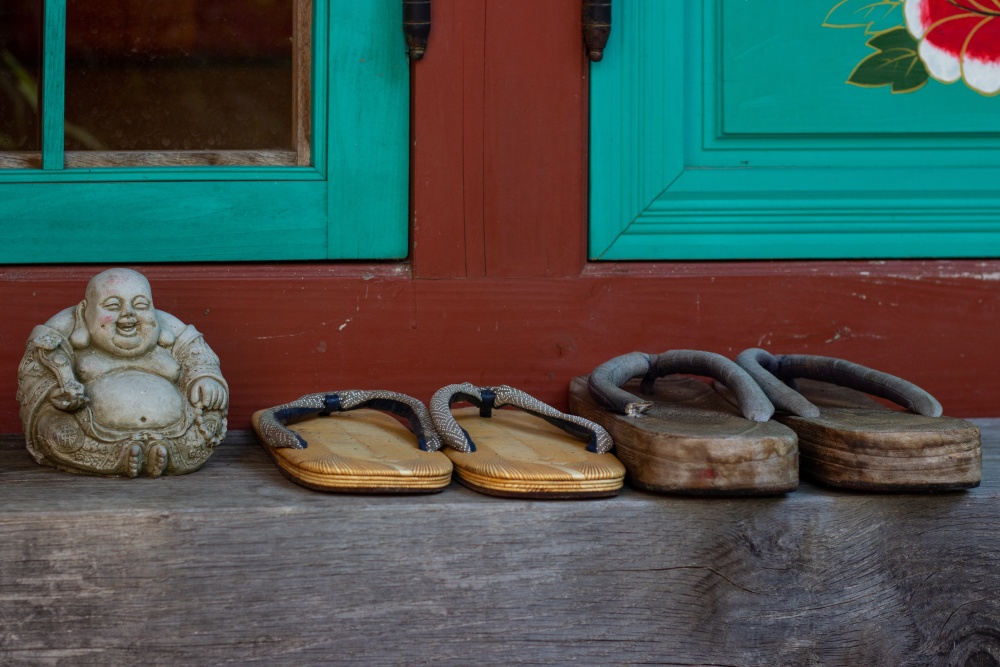
A kimono look wouldn’t be complete without proper footwear, which is where socks and sandals come into play.
If you’ve ever wondered how Japanese can wear socks and split-toed sandals together, meet tabi. Tabi are a special type of white socks with separated toes that can be worn with sandals.
While proper tabi are usually white, wearing colored or even patterned ones isn’t totally unheard of. However, do keep in mind that special and formal occasions always require the traditional white tabi.
As for the sandals, there are two distinct types: the zori and the geta.
A zori is a thonged type of sandal that can be made from various materials, which determines the occasion the sandals can be worn. While a traditional zori is made from straws, nowadays, straw zoris are considered more casual.
For more formal, serious occasions, it’s more appropriate to wear brocade-covered zori, but vinyl ones will also do.
Lastly, the geta is basically a high-heeled zori, but the wooden heels raise the sandals like a flat platform rather than forming an incline like the high-heel shoes worn in the West.
While zori can be worn in more formal settings, a geta makes for a perfect combination for a more casual summer look. There’s also another specific type of geta called okobo, which is worn by geisha apprentices and has higher heels.
Know Your Kimono: The Different Types of Kimonos
As you can tell by now, the kimono has a pretty significant place in traditional Japanese fashion, but what else could you possibly expect when the word itself used to mean “a thing to wear?”
Of course, nowadays, not all Japanese clothing is called a kimono, but there are still various types of kimono you might come across that all look different and serve different purposes.
So, let’s now take a look at some of the most significant types of kimono there are and see what occasions they’re for.
Furisode - The Formal Kimono
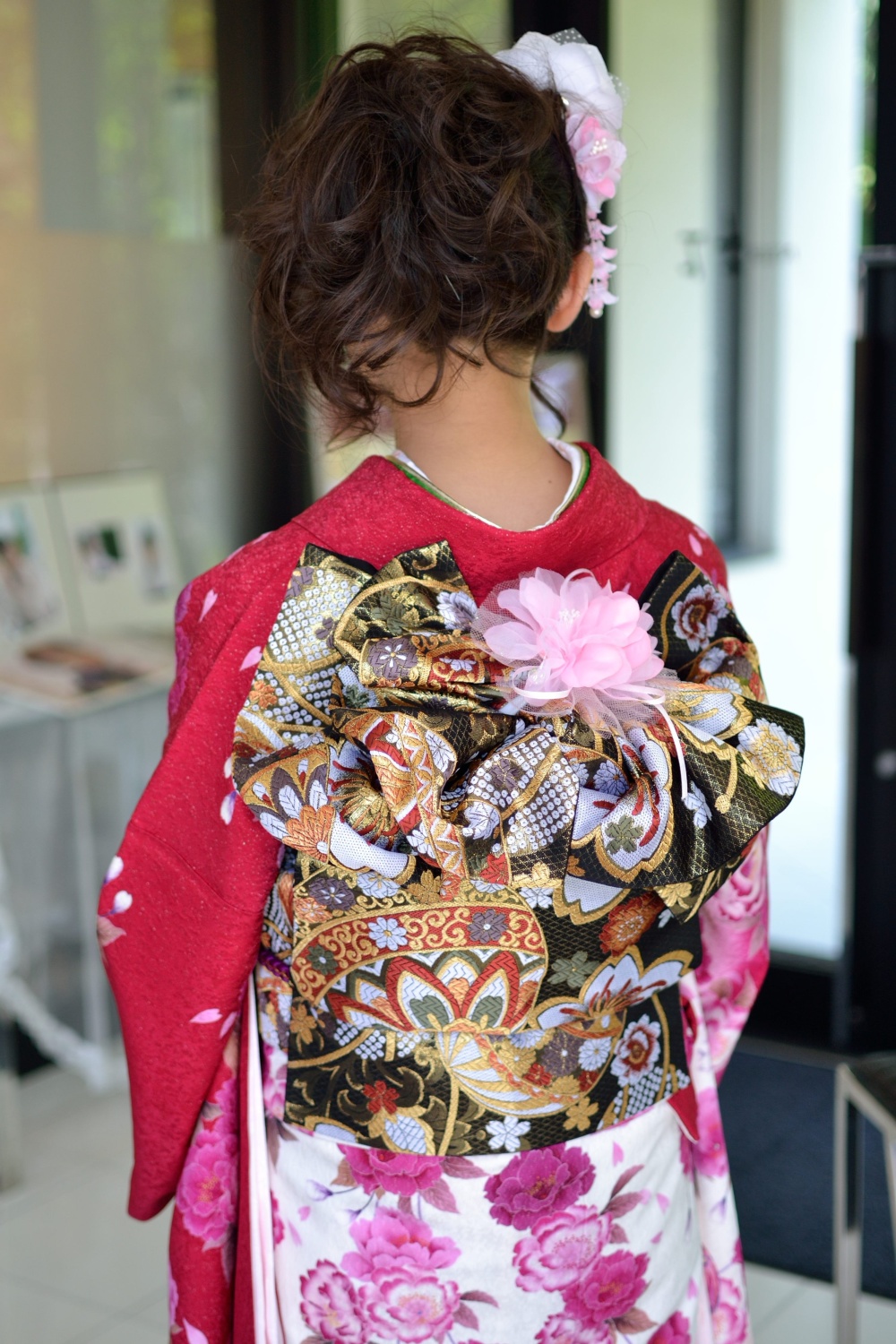
If you’re looking for a traditional-looking kimono, look no further. Furisode is a kimono that’s worn for the most formal occasions and is usually worn by younger, unmarried women.
It’s easy to spot a furisode from afar, as the long, draping sleeves and the intricate, eye-catching designs are a dead giveaway that this is no ordinary kimono. After all, the name itself means “swinging sleeves,” alluding to the exaggerated proportions of the robe.
While furisode all have relatively long sleeves, with the largest one, the ofurisode, having sleeves around 104 cm in length, there are also medium-length (100 cm) and shorter-sleeved (80 cm) ones, called chufurisode and kofurisode, respectively.
The shortest-sleeved of the bunch, the kofurisode, is also often worn by young women for graduation ceremonies. This isn’t an exception, however, as furisode are often worn during celebrations of one’s milestones in life.
Furisode often boasts colorful and detailed designs, featuring the common patterns of flowers, cranes, and cherry blossoms, in addition to embroidery and designs that form as a result of the Japanese tie-dye technique, shibori.
Uchikake - The Occasional Kimono

While furisode is the most formal wear for most occasions, there’s another kimono type that’s so occasional that it has two distinct uses — as bridalwear and for theatre performances. Meet uchikake.
Uchikake isn’t exactly a kimono that can be worn by itself; it’s a jacket that’s worn on top of a kimono. The garment is specifically used as an outer layer for women’s bridal gowns and is usually either white or bright red, with the usual patterns and colors that symbolize good fortune and wealth dominating the designs.
As with most wedding dresses, uchikake is also a large, flowy dress-like robe and is meant to be larger than the kimono worn under. Also, unlike a kimono, an uchikake doesn’t have to be tied around the waist with an obi, as it’s meant to drape over the body.
Hikizuri - The Long Kimono
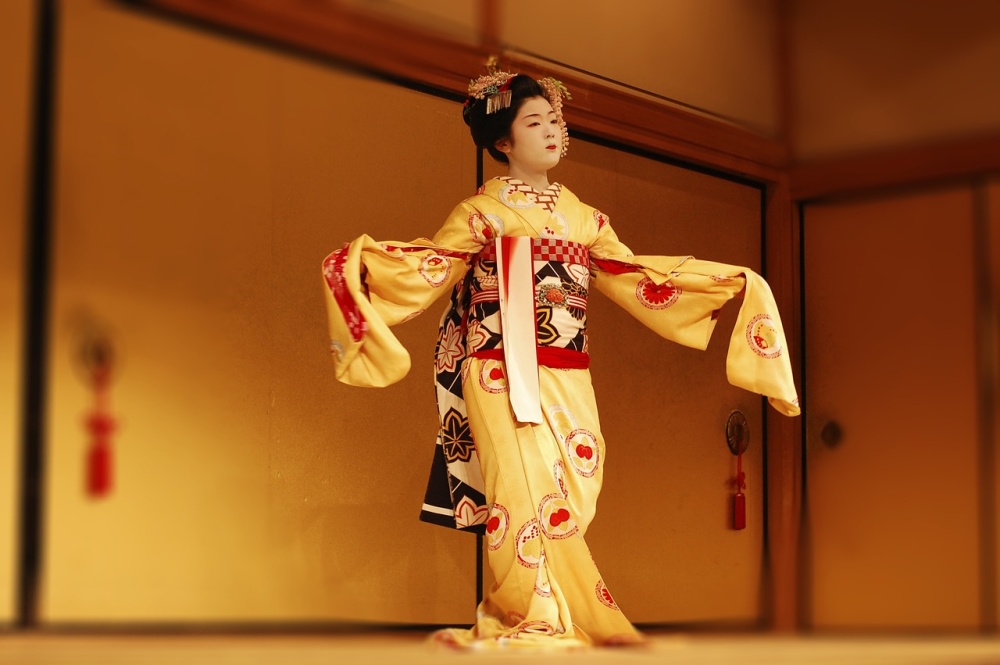
A hikizuri is a type of kimono with an exceptionally long skirt that drags behind elegantly as the wearer walks by. The name literally translates to “trailing/dragging skirt.”
Unless you’re in specific parts of Tokyo or Kyoto, the chances of you running into someone wearing one of these in the wild is pretty slim because hikizuri is nowadays mainly worn by geisha, as well as for theatrical or dance-focused stage performances.
Hikizuri was a symbol of wealth and high status among women. As the times changed and women started to play bigger roles in society, these robes became impractical with their long, dragging skirts, as they clearly weren’t designed to be worn when you were out and about.
Tomesode - The “Cut” Kimono

Another formal kimono type, the tomesode, is worn mostly by married women. Although the dress is for formal occasions, it shouldn’t be confused with the furisode, which is worn by unmarried young women.
Tomesode has shorter sleeves compared to the furisode since, historically, this kimono used to be made by cutting the sleeves of young women’s furisode shorter when they got married. The name itself even implies this fact, as the term furisode is interpreted as “fastened/shortened sleeves.”
Another feature that sets tomesode apart is the fact that it only has patterns under the waistline of the robe. There are usually three to five family crests featured on the dress as well.
Traditionally, a tomesode is the official formal wear of married Japanese women and is the equivalent of an evening gown worn by women at weddings and other special occasions in the West. In fact, a tomesode worn at weddings is usually black and has a special name, which is kuro-tomesode, while a colored one is called a iro-tomesode and is considered less formal.
Houmongi - The Visiting Kimono
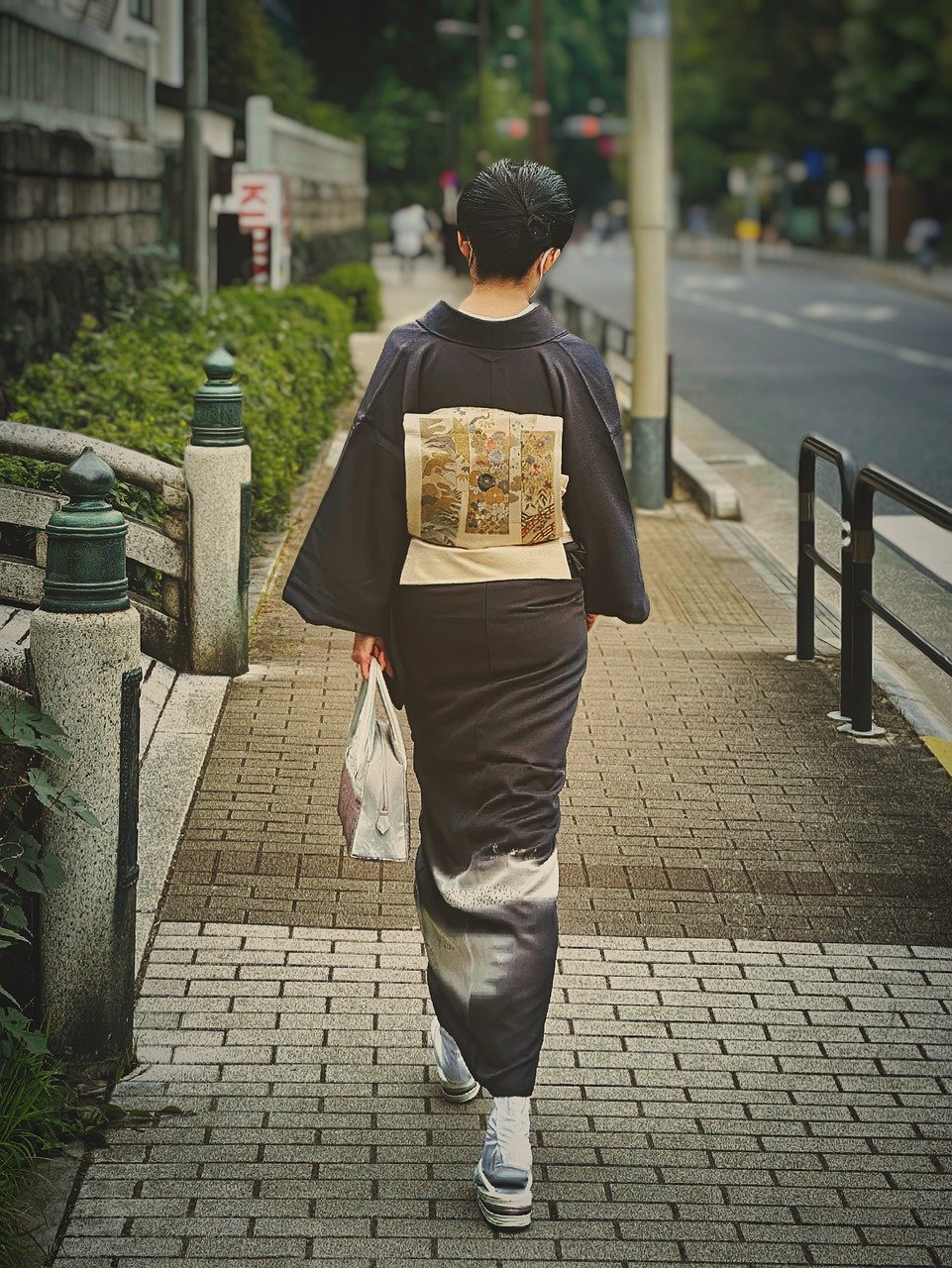
Another kimono that’s usually worn by married women, the houmongi, is also a non-casual type of kimono that’s usually worn when visiting someone’s house, attending an event or a tea party, or at other similar social events.
Generally speaking, there are no set patterns or colors for Houmongi, but they’re usually on the flashier side because they’re made to be worn for events. However, it’s not exactly a “smart” look, as it’s more suitable for semi-formal gatherings.
Although the design may differ, a houmongi usually has patterns that stretch over and across the shoulders, on the hemline, and on the sleeves. Due to the design stretching over the whole garment, houmongi are usually made using the eba-moyou method, which allows the pattern to stay intact and visible even at the seams of the dress.
Iro Muji - The Single-Colored Kimono

Another dress for occasions — iro muji — is a single-colored kimono type that can be in any color. However, you’ll rarely ever see one in black.
An iro muji can be worn at many events, and it can even be worn in darker colors for condolence visits when someone passes. Young women usually wear it for graduations and other events, but there’s also a special type of iro muji that’s only for tea parties.
While an iro muji is far from casual attire, it’s still not too flashy and not quite suitable for fancy events. If you ever need a kimono to wear for an occasion where the spotlight is expected to be on someone else, such as a wedding, a birthday party, or graduation, an iro muji is the perfect outfit.
Note that if there are no family crests on an iro muji, it can also be worn as a daily dress. Basically, the more crests the dress has, the fancier it gets so that it can be worn for celebrations and special occasions.
Komon - The Casual Kimono
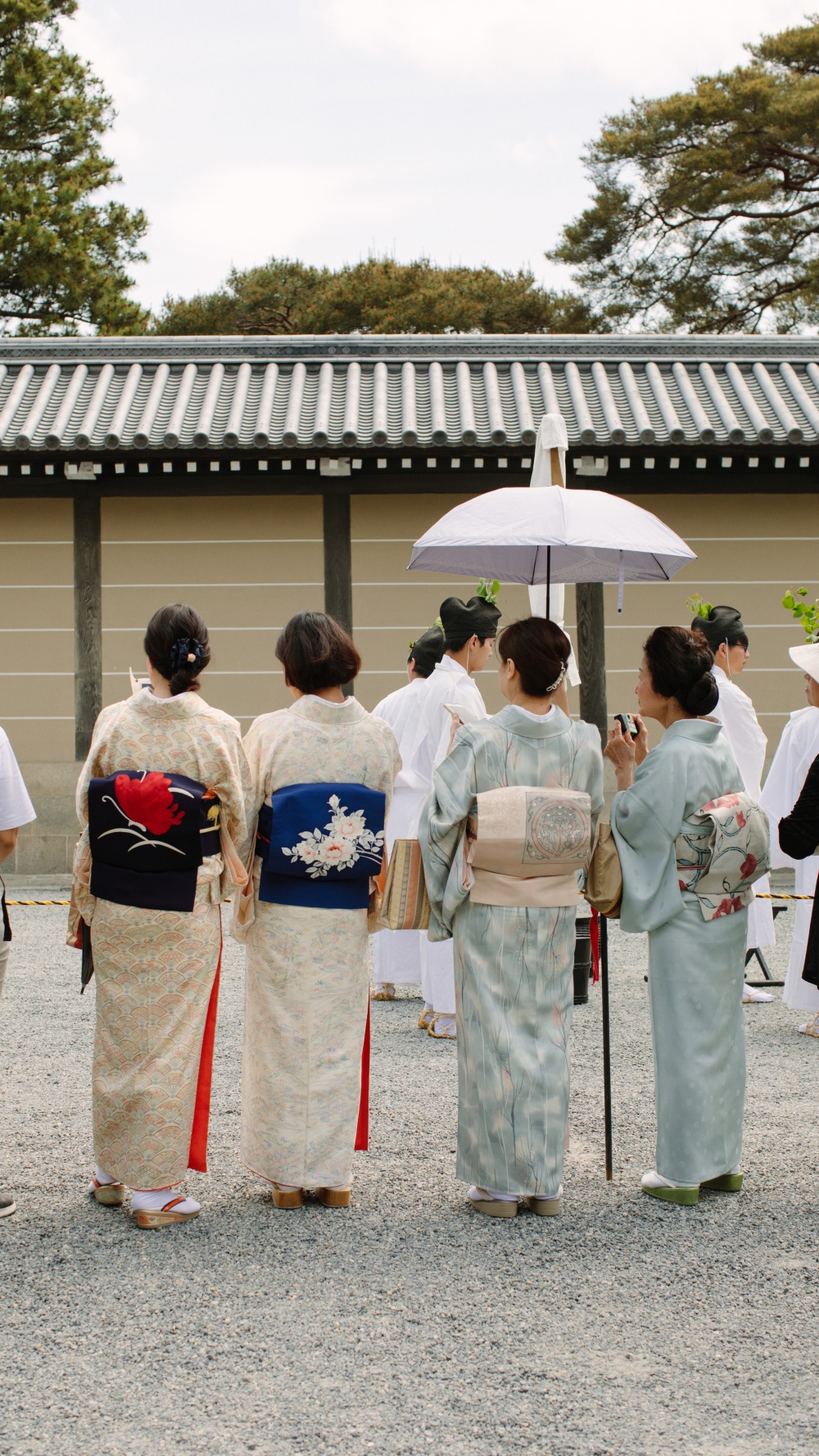
If you see someone going about their day in a kimono with colorful patterns, they’re likely wearing a komon, a basic type of kimono that’s worn casually.
The komon usually has stencil-dyed repeating patterns that are applied in a specific way, which is called katazome. However, they also come in a variety of different colors and patterns, thus making them suitable for a wide variety of occasions.
Komon can be worn when you’re taking a walk out on the town or while running errands. If you pick one that’s decorated well with beautiful patterns and colors, you can even wear your komon to go out with your friends or attend a casual party.
There’s also a special type of komon, which is called an edo komon, and this one is much more modest in nature. These komon originated in the Edo period of Japan, at a time when it was prohibited to use flashy designs and colors.
Komon are considered to be casual wear due to their simplicity, but a close-up will reveal incredibly detailed and small patterns that are practically hidden in plain sight.
Shiromuku - The Wedding Kimono
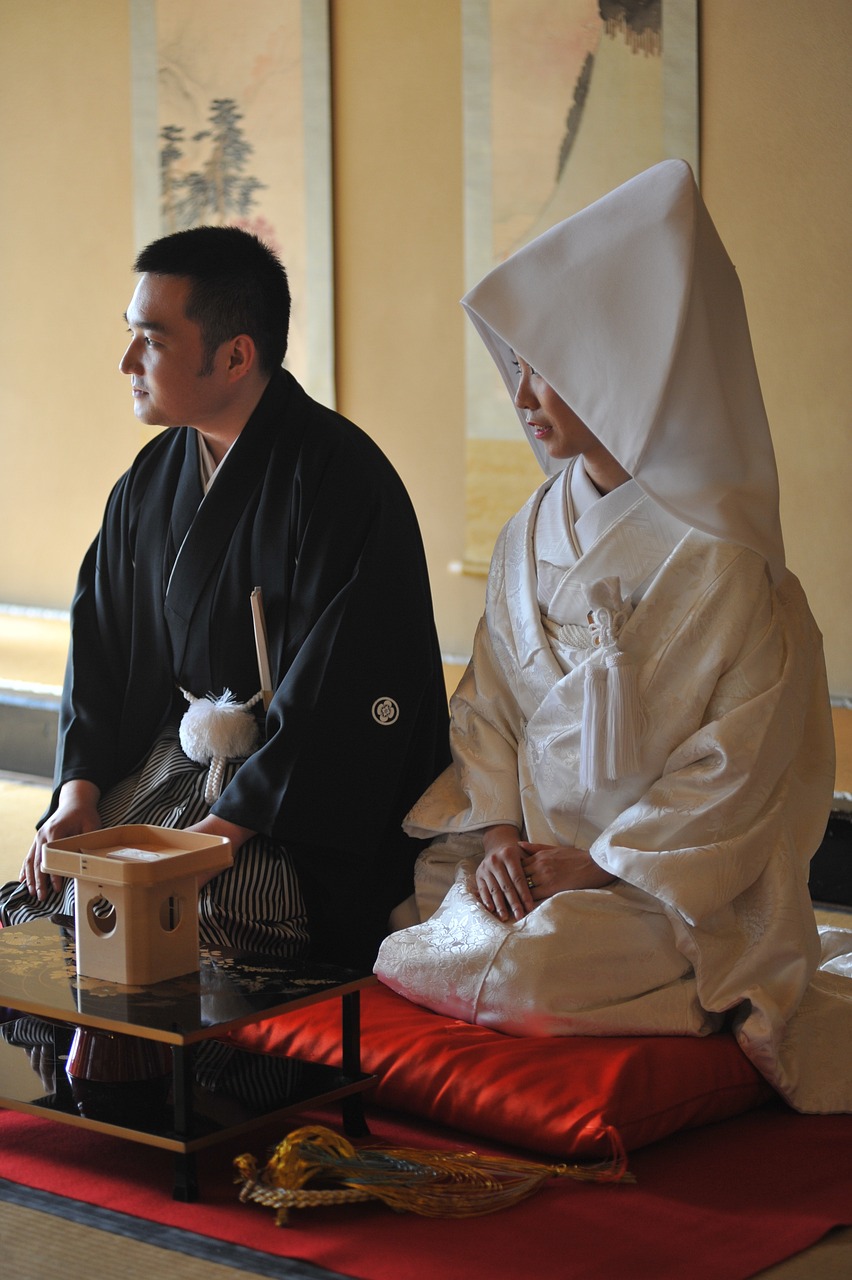
Made from all-white fabric, a shiromuku is a traditional bride’s wedding dress in Japan. However, the reason shiromuku are white is different than that of the white wedding dress of the West.
Basically, in the era of the samurai, wearing white was the woman’s way of showing her loyalty and submission to the family she was marrying into. The white dress meant that the bride was entering the new family with a clean slate and that she was ready and willing to blend into her new family.
Even though a shiromuku is supposed to be plain white, the dress still features beautiful designs and embroidery all over. Once the actual ceremony is over, the bride usually changes out of the shiromuku to wear a nicely colored uchikake.
As it’s a very formal ceremonial dress, a decorative wig called katsura, along with a wide headpiece called tsunokakushi or a wataboshi, accompanies the shiromuku. Other common accessories to complete the look are a kaiken, which is a traditional dagger carried by samurai women, a folding fan, and a small purse-like pouch.
Yukata: The Casual Summer Kimono
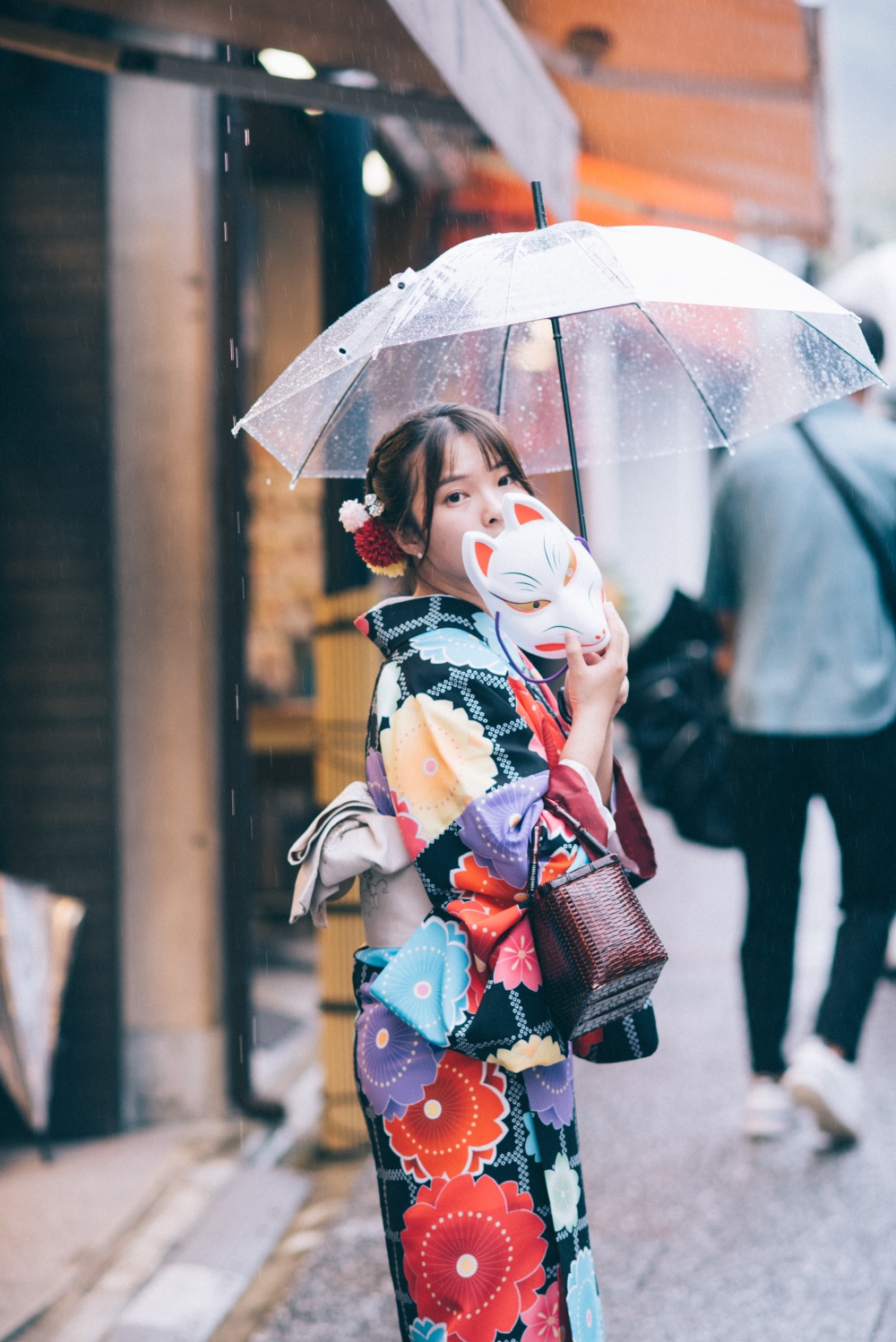
Now that we’re done with traditional kimonos, it's time to take a look at a more casual dress that’s usually worn in summer, and that is the yukata.
Yukata is a dress that’s worn by women, and it’s arguably the most casual you can get while still wearing traditional Japanese clothes.
Perhaps the most common occasion to wear a yukata is a summer festival or a firework festival. While they can be worn as celebratory dresses in the summer, they can also be worn at ryokans, which are, as I mentioned in my post on Airbnb and other accommodation types in Japan, traditional Japanese hotels.
This is because, traditionally, yukatas were worn as sleepwear. After a bath, a person would wear a yukata as a light and comfortable garment to easily put themselves to sleep. So, in this context, a yukata is similar to a nice comfy robe that they offer at fancy hotels.
Yukata vs. Kimono: The Main Differences
As I mentioned previously, unlike a regular kimono, a yukata is worn in summer and is often called a summer kimono because of that. However, this isn’t the only difference that sets the two apart.
Perhaps one of the biggest differences between a yukata and a kimono is actually the fabric itself. While the most commonly used material for a kimono is silk, a yukata is usually made of linen or cotton.
As you may have guessed, this is mostly because cotton and linen are lighter fabrics that go better with the warm summer weather. However, you can still find some yukatas made out of silk as well.
For similar reasons, another difference that sets these two dresses apart is the fact that a kimono is worn with additional layers underneath. While it’s almost a requirement to wear a nagajuban under a kimono to keep it in pristine condition, a yukata can be worn by itself, as it can be washed more frequently. Besides, wearing another layer underneath would defeat the purpose of it being summer attire anyway.
The sleeve length is another feature that’s different in a Yukata. While a kimono can have different sleeve lengths, depending on the occasion and level of formality, a yukata is always short-sleeved, as it’s made for the summer.
Lastly, as you may recall, a kimono is worn with traditional white socks and zori sandals, but this isn’t the case for yukata. You can wear one barefoot, along with the more casual traditional geta sandals.
How to Wear a Yukata the Right Way
If you’re staying in Japan long enough, you’re bound to visit a Ryokan eventually. This is why while you might not necessarily need to learn how to wear a kimono, you may need to learn to wear a yukata.
Ryokans are the representation of peak Japanese hospitality, with an environment that offers more than just a place to sleep, but a place to relax and enjoy yourself, and what better way to relax than slipping in a soft, comfy yukata!
As I mentioned, yukatas are as associated with ryokans as they’re with summertime, as it’s sort of a tradition to wear them at these places. So if it’s your first time at a ryokan and you want to wear your yukata the right way, here’s how you do it.
Tips for Wearing a Ryokan-Style Yukata
First off, if this is your first time wearing a yukata, know that wearing a ryokan-style yukata is less complicated. This means that the chances of you messing up and doing something “wrong” are pretty slim.
Although, as a foreigner, no one would get on your case about wearing a yukata wrong, it’s still a good idea to play it safe since the Japanese are culturally conditioned to conceal their true feelings, as I mentioned in my post on honne and tatemae.
As I mentioned, to wear a yukata, you don’t need to wear anything else underneath other than your underwear. Once you put on the robe, take the right side of the yukata and wrap it around the left side of your waist. Then, take the opposite side and wrap it over the right.
Keep in mind that this wrapping order is important, as the opposite is how the dead are dressed traditionally.
Also, you may feel tempted to do so, but don’t wrap the garment around too tightly. Try to match the length of the two sides, and you’re good.
For women, as you hold the robe closed with one hand, take the sash and wrap it around your waist; for men, the sash goes around your hips. Wrapping it two or three times should be fine, depending on your size, but you should leave enough to tie it in the front.
Once done, take the ends of the sash and make a bow in the front. If you like it better, you can also slide the bow to the back once you're done, and you’re good to go!
Yukata can also be worn as a casual daily dress, but wearing it requires a few more steps than this one. Also, this type of yukata has an additional obi belt that’s worn over the cord that holds the garment together. Let’s take a look.
Tips for Wearing a Yukata as Casual Summer Wear
Pick the two sides of the robe and pull it in front of you. Then, check to see if the bottom of the dress is around your ankles. This is your desired length.
After that, try to keep this length as you wrap the robe the same way I described above, starting with the right side. Once you’re done, you’re ready to tie the cord around your waist.
Be careful, however, as you need to tie the cord differently than the ryokan-style sash I described. You’re supposed to tie it around your waist in a way that allows the top right and left sides of the fabric to drape over the cord. Again, make sure that both sides of the bottom of the yukata are the same length.
Now onto the tricky part: you need to place your hands into the slits that are located on both sides and tighten the top around your chest. Once you reach the desired tightness, you should be able to tuck the excess fabric under the cord from inside the dress behind your back. If you do it right, the cord should no longer be visible.
Then, take one side of the sash and fold a waist-length piece over itself. Now you can wrap the sash twice around your waist and tie it securely.
You can now take the part you folded over and fold it onto itself like an accordion. Then, pinch the belt, forming a bow shape. You should now be able to wrap the other end of the sash around where you pinched the folded accordion-like piece.
Once you secure the bow by tucking the loose end of the sash under the waist, turn the bow around to your back, and you’re ready!
If you’re unsure if you did it correctly, here’s a video guide you can follow to make sure everything looks perfect.
Other Japanese Dress Styles: Jinbei, Hakama, and Haori
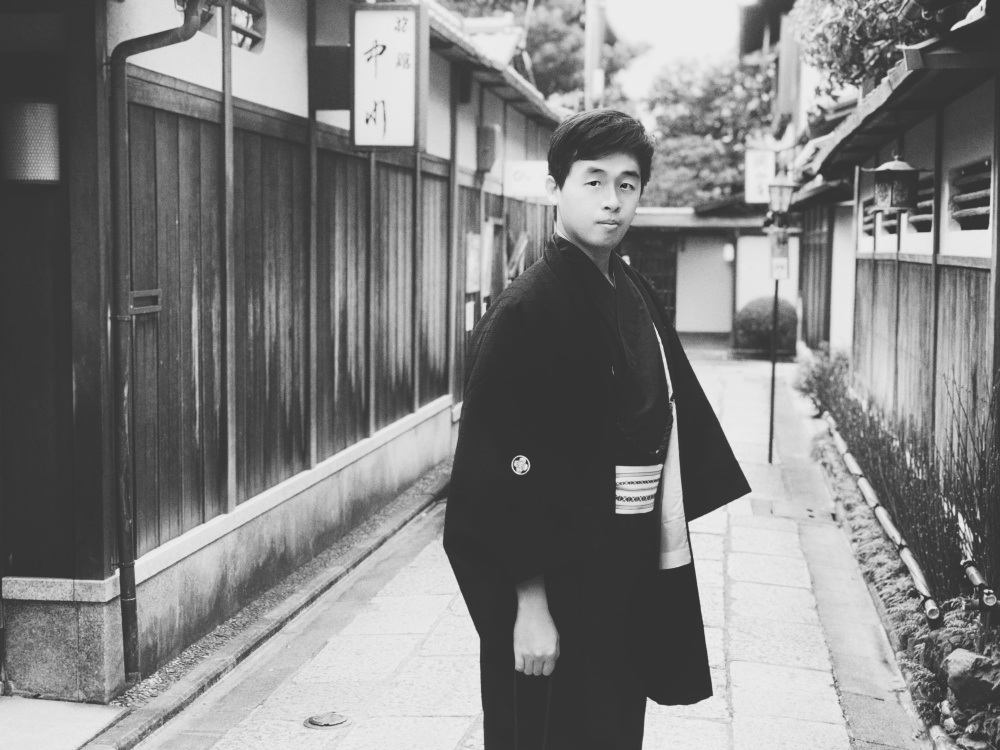
Having covered some of the main components of traditional Japanese fashion, let’s now briefly explain what some other common Japanese clothing types are and when you should wear them.
Jinbei - Comfortable Japanese Loungewear
During the summertime, another especially popular clothing item you’ll see is the jinbei. Simply put, a jinbei is a type of loungewear that’s usually worn at home by men and children. Although, nowadays, you can see some people wearing it out to festivals in the summer as well.
You can think of jinbei as the summer pajamas, as it comes in two pieces: a short, jacket-like robe with short sleeves, and a pair of loose shorts.
As they’re summer clothing, jinbei are made out of light, breathable fabrics that are made of cotton and hemp.
There’s also another clothing that looks very similar to the jinbei called a samue, but these are usually worn by farmers in the inaka, Japan’s countryside, and have longer, ankle-length pants instead of knee-length shorts.
Haori and Hakama - Traditional Japanese Pants and Jackets
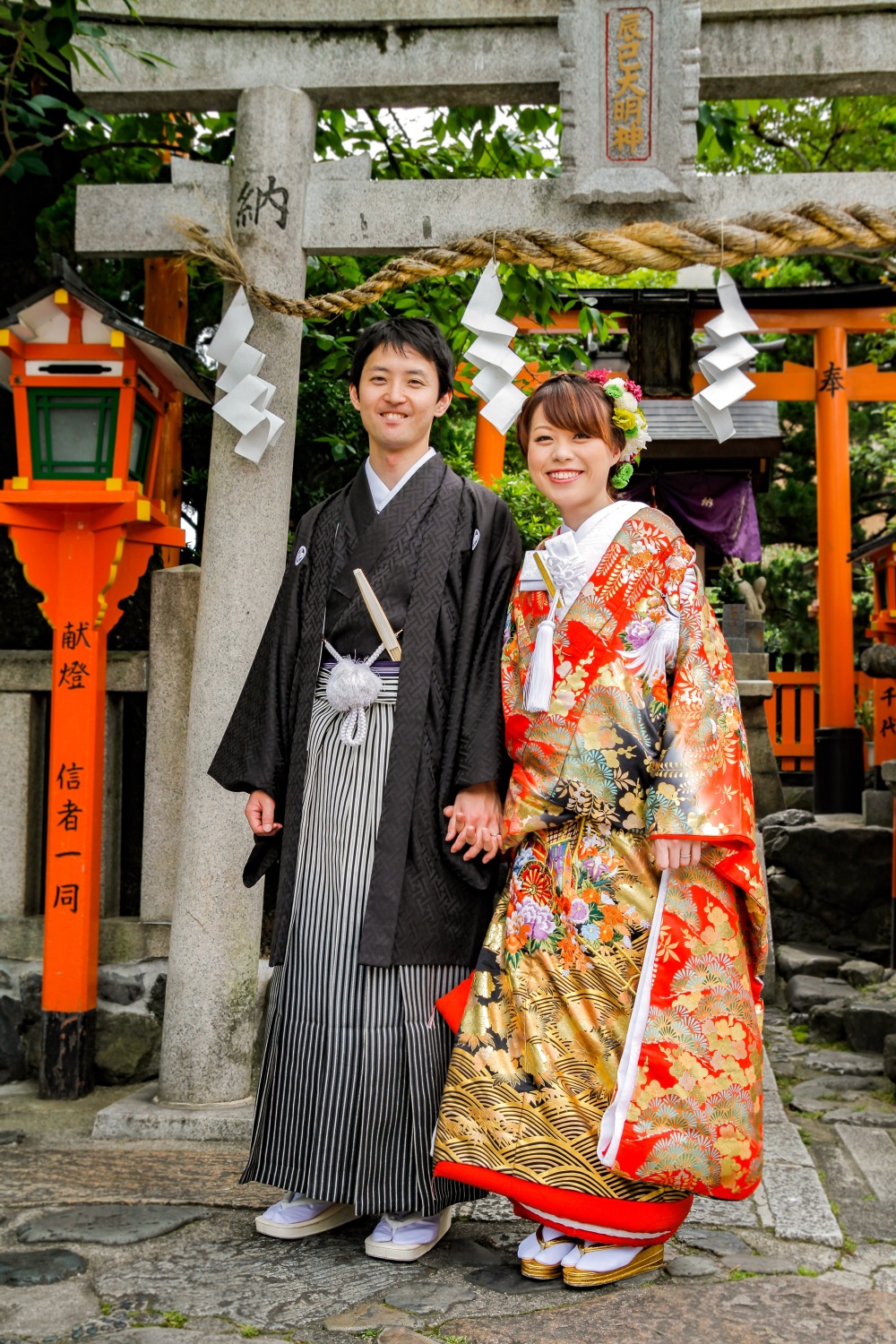
Last but not least, the haori and the hakama are classic jackets and skirts that are traditionally worn by men. Nowadays, both can be worn by women as well.
As I mentioned briefly, a haori is an overcoat-type jacket that’s usually worn over a kimono. Men used to wear this during wars to keep themselves warm in Japan’s cold winters. However, nowadays, the haori and the hakama together are worn by grooms as a classic wedding outfit.
Hakama, on the other hand, are skirt-like pants that have divided leg holes that are not visible from the outside.
While traditionally a men’s outfit, as there are various types of hakama nowadays, there’s also a specific type that can be worn by women as well and is called an andon hakama.
Unlike the umanori hakama, which has divided legs that are usually worn by people who practice martial arts, an andon hakama has no partition inside and is actually a regular skirt. These types of hakama are frequently worn by women during graduation ceremonies.
Get Job Alerts
Sign up for our newsletter to get hand-picked tech jobs in Japan – straight to your inbox.


